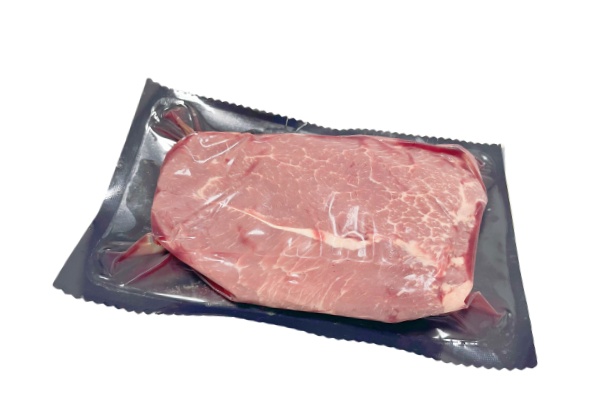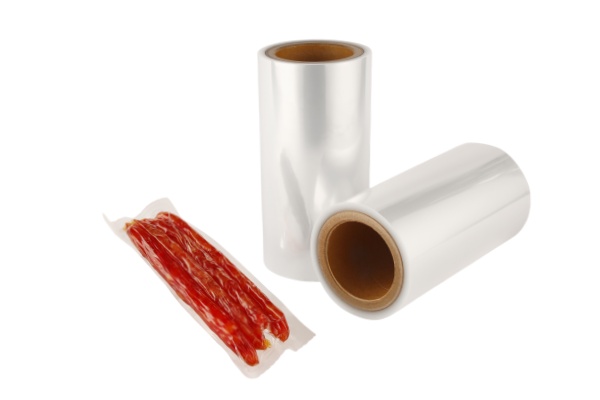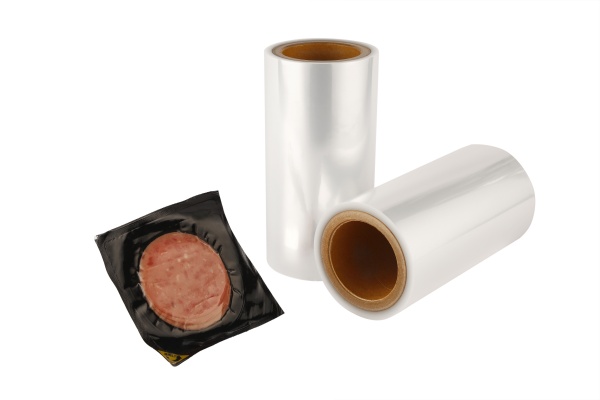Thermoforming Film PA/EVOH/PE High Barrier Food Plastic Packaging Film
11 layers coextruded PA/EVOH based high barrier Thermoforming Films can be customized to meet specific requirements, such as barrier properties for oxygen and moisture resistance, puncture resistance, printability for branding and product information, and even enhanced shelf life for perishable products.
The specific structure may vary depending on the intended application and desired properties, but here is a common example of the main structure for thermoforming film:
Outer Layer
The outer layer is usually a clear or opaque polymer film that provides strength, impact resistance, and protection to the contents inside the package. It may be made of materials like Polyamide(PA), polyethylene (PE), polypropylene (PP), or polyester (PET).
The tie layer acts as an adhesive between the outer layer and the barrier layer, enhancing the film's overall strength and ensuring good bonding between the different layers. It helps prevent delamination and provides integrity to the structure.
Barrier Layer
The barrier layer is designed to provide specific barrier properties, such as gas (oxygen, moisture, etc.) or aroma barrier, to protect the product from external factors. Common materials used for barrier layers include ethylene vinyl alcohol (EVOH), polyvinylidene chloride (PVDC), or metallized films.
Adhesive Layer
In some multilayer structures, an adhesive layer may be used to ensure proper bonding between the barrier layer and another layer, such as the tie layer or the sealing layer. It helps maintain the integrity of the film structure.
Sealing Layer
The sealing layer is typically located on the inner side of the film and is responsible for providing a strong seal when the film is thermoformed or heat-sealed. It enables the film to be securely sealed around the product, maintaining its freshness and protecting it from contaminants. Materials like polyethylene (PE) or polypropylene (PP) are commonly used for the sealing layer.
It's important to note that the number and arrangement of layers may vary based on the specific requirements of the product being packaged and the desired properties of the thermoforming film. Manufacturers can customize the film structure by adjusting the type and thickness of each layer to meet the specific needs of the application, such as food packaging, medical packaging, or industrial packaging.
Asymmetrical Structure
PA/PE
PA/PE/PA/PE
PA/PE/PA/EVOH/PA/PE
PA/PP/PA/EVOH/PA/PE
PA/PP 【HIGH TEMPERATURE FILM】
PA/PP/PA/EVOH/PA/PP 【HIGH TEMPERATURE FILM】
PE
PP
MDOPE
MOPP
PET
Symmetrical Structure
PP/PE
PE/PA/PE
PP/PA/PE
PP/PA/PP
(Corona Treated)PE/EVOH/PE (SIT90°C)
(Corona Treated)PP/EVOH/PP (SIT90°C)
PE/PA/EVOH/PA/PE
PP/PA/EVOH/PA/PE
PP/PA/EVOH/PA/PP


